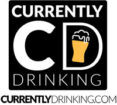[ad_1]
Champagne did not all the time have its crystalline readability. Traditionally, like many different wines, it was bottled with lees, leading to a remaining sediment in every glass and infrequently giving the beverage the looks of cloudy apple juice.
Within the first ever piece of artwork which depicts champagne as a glowing wine in 1735, a couple of of its mysteries are unveiled. Jean-François de Troy’s masterpiece not solely captures the effervescence with popping corks and overflowing glasses but in addition reveals an uncommon apply that arose from the period of cloudy wines. On this paintings, friends are depicted downing their wine after which inserting their glasses the other way up in a small bowl subsequent to their knives. Wines had been solely loved as soon as the sediment had settled, and once they had been completed, they had been left to permit the dregs to slip out for disposal.
Jean-François de Troy, Le Déjeuner d’huîtres, huile sur toile, 1735
Earlier than the invention of the riddling rack, varied strategies had been devised in pursuit of limpid wine, with various ranges of success. Many producers decanted their wines three or fours instances to take away the sediment, hich demanded important labor and time. Within the late seventeenth and early 18th centuries, resourceful monks turned to sandboxes as an answer. They initially positioned the bottles horizontally and steadily shifted them to a vertical orientation. This system aimed to seize the lees within the bottle’s neck. Nonetheless, as a result of nonetheless imperfect fermentation course of and the bottles’ fragility at the moment, this method usually resulted in important breakage. In 1732, as recorded in notes from some of the notable monks of the time Canon Godinot, out of 594 bottles opened, 345 could not stand up to the interior stress. Throughout this period, bottles had been sealed with a cork and secured utilizing hemp string to comprise the roughly 6 bars of stress inside every bottle. Because the nineteenth century approached, the string was changed with metallic staples, referred to as agrafes, and bottles had been positioned on slanted racks with indirect holes, a design launched in 1813. Though the bottles had been already positioned at an angle, they weren’t but systematically rotated.
It wasn’t till 1818 that the historical past of riddling really started. Legend has it that barbe-Nicole Ponsardin Clicquot, on a suggestion from her Cellar Grasp, Antoine Muller, created an entire new methodology to make clear her wines. The standard methodology concerned inverting bottles to permit the sediment to settle used probably dangerous components and clarifiers, or decanting many instances which might take over three months. This prolonged clarification interval did not align with the ambitions of the Widow, who, after cautious consideration, had a breakthrough thought. She realised that storing the bottles “sur pointe” or “on their necks” would offer an environment friendly manner for the sediment to gather within the bottle’s neck. The story goes that she had holes drilled obliquely in her kitchen desk “in order that the bottles could possibly be slanted at varied angles, permitting the bottles to be turned and sediment to be gathered by gravity. The riddling desk, an ancestor of the riddling rack, was born!
In 1864, a patent was crammed by a Mr. Michelot for a riddling rack as we all know it at present, with two slanted items of wooden holding 120 bottles.
With the invention of the riddling rack, a brand new career was additionally born: that of the riddler. Their job was to detach the deposit from the bottle’s partitions by performing a double rotation, first to the left, then to the appropriate, whereas steadily tilting the bottle increasingly more with the riddling rack to carry the deposit close to the neck. Mastering the environment friendly “wrist flick” was very tough. On the time, the most effective of them might riddle as much as 75,000 to 80,000 bottles a day.
In 1920, the primary crank-operated riddling rack appeared, marking the very starting of automation. Bottles positioned on cabinets had been raised vertically utilizing a crank. This enabled 108 bottles to be riddled without delay. Nonetheless, it wasn’t till 1966 that the primary computerized machine was born: the Pupi-Matic. Holding 240 bottles in stacked cuplike holders, it was linked to mains energy which lighlty shook the bottles to dislodge the lees.
In 1973 got here probably the most revolutionary machine: the gyropalette.
Invented by winemaker from Le Mesnil sur Oger Claude Cazals, and inventor Jacques Ducoin, the primary prototype took over 5 grueling years to create. On the point of giving up, they had been joined by Pierre Martin and Georges Hardy, with whom they based Station Œnotechnique de Champagne (SOEC). For six extra years these 4 innovators tirelessly experiment and current their new innovations at varied gala’s.
In 1978, after being humiliated and seen as madmed at one more commerce truthful, they’re prepared to surrender altogether. After which a Christmas miracle occurs: Piper Hiedsick places by way of an order for 221 gyropalettes! Then comes an order for Taittinger for 231 gyropalettes, and Roederer for 60.
It wasn’t lengthy till opponents began flooding the market, and at present 5 essential machines are utilized in Champagne: le Champarex, le Rotopal, le Remupal, le Giratech et le Giromatic.
Many of those are exported, and have been baptised with hilarious names abroad, notaly the VML within the USA which stands for Very Massive Machine. So artistic!
General the gyropalette reduces riddling time from 3 months to round per week. The method is rather more exact and allows a winemaker to riddle 504 bottles in lower than two sq. metres, over forty instances a 12 months.
Some exceptions nonetheless stay, with giant codecs nonetheless being riddled by hand, retaining the romance of Barbe-Nicole Ponsardin’s custom alive.
[ad_2]

